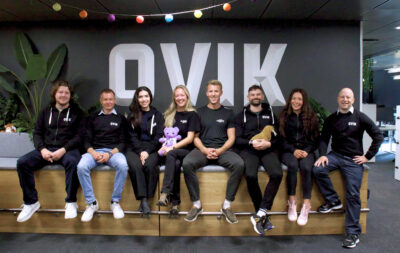
How to keep projects running effectively during extended periods of remote work?
We have excellent telecommunications equipment and fast internet connections. This makes remote work easy. But what happens when working from home becomes the norm? How can teams stay productive for such extended periods? Things we take for granted at our colocated workspaces require effort to keep teams productive when working from home. In particular, put […]
We have excellent telecommunications equipment and fast internet connections. This makes remote work easy. But what happens when working from home becomes the norm? How can teams stay productive for such extended periods?
Things we take for granted at our colocated workspaces require effort to keep teams productive when working from home. In particular, put your focus on these:
1. Communicate more than usual. Use slack, video calls, email, phone calls, maybe even write a letter if it helps the cause.
2. Focus on proactiveness and self-direction – Things sometimes have a tendency to fall through the cracks of communication: make sure that everyone understands what needs to be done.
3. Keep things up to date – Promote transparency and minimize misunderstandings. If you use project management tools, update the tickets regularly with comments and move the tickets to the correct swimlanes.
4. Remember human connections – Make a video call or phone call when you need to discuss something in more depth with your colleagues. A five-minute call is better than 40 lines in chat. Always keep the camera on.
5. Make sure that your telecommunications equipment is working properly.
6. Be on time for meetings. If you don’t think this is relevant, watch this parody of a conference call and think again.
7. Follow conference call etiquette and the meeting’s agenda. Facilitation is now more important than ever.
Keep your roadmap up to date and realistic
The project’s product roadmap needs to be updated in a way that promotes working more independently of other teams, if you are working in a multivendor environment. With communication more important than ever, it’s important to ensure that work can continue without interruptions.
Now would be a great time to take a look at the items from the following list with the least dependencies and prioritize accordingly.
- What is the level of technical/design debt in the project? Can it be made visible?
- How much refactoring is needed? The code usually has ‘TODO’ statements that are not prioritized.
- What is the defect state of the project? Can those now be prioritized and that value delivered to the end-users?
- Test automation enhancements create tremendous value for the project.
- Can the CI/CD pipeline be automated more. Could it even be possible to create the delivery pipeline?
- Can extended testing be performed and test plans updated?
- Documenting all those business-critical but undocumented technical solutions that are usually stored only in someone’s brain
All of the above drive value generation for the end-user, and therefore create business value for the company. There is work to be done and getting it done is important. Together we can do this, it just needs to be planned well and communicated effectively to the teams.
Good luck and stay safe!
P.S. This is a stressful time for everyone. We urge you to also focus on your mental health and find your own way to unwind on a regular basis.


